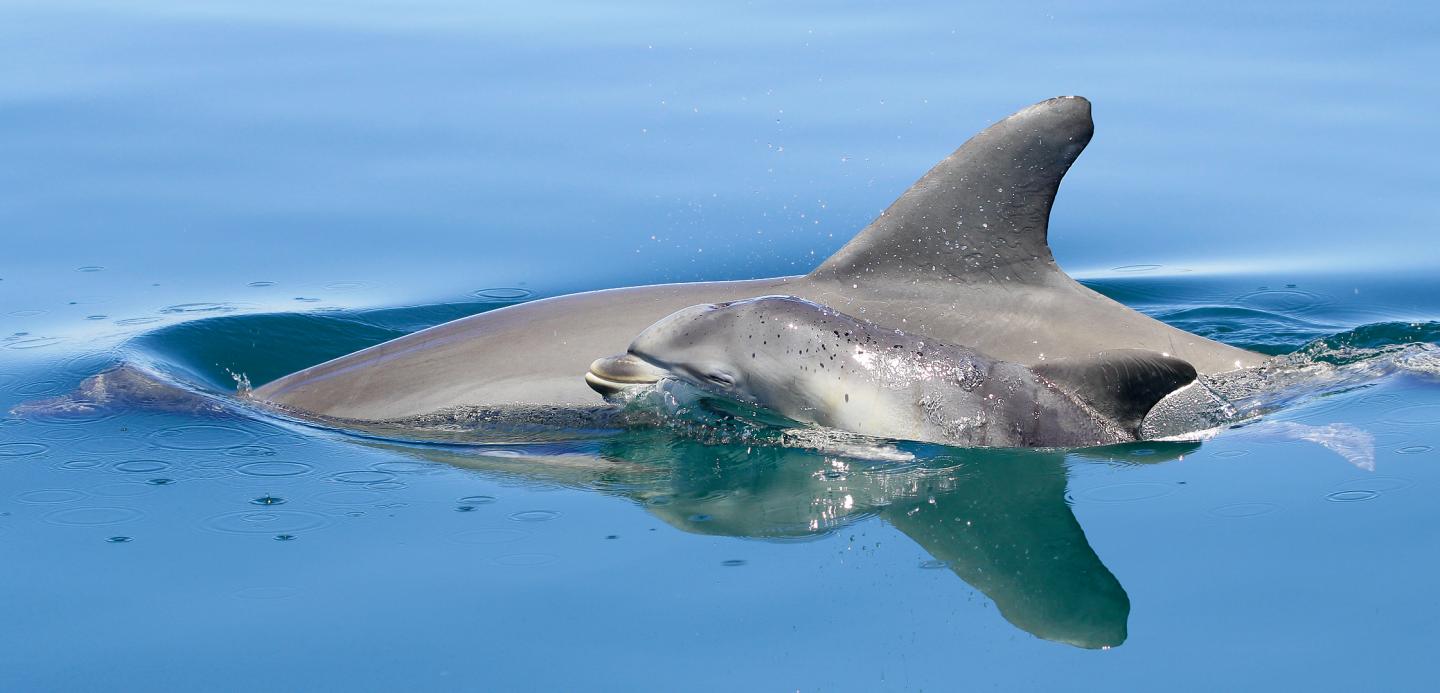Mothers and singles swim in select areas

Credit: Photo Dr Fernando Diaz-Aguirre
Social clusters including mothers’ groups play an important role in the life of southern Australian bottlenose dolphins, a new study shows.
Like giraffes, lions, hyenas and grey kangaroos, bottlenose dolphins appear to form social bonds with kin and other females in similar reproductive condition, while maintaining moderate and loose social bonds with some same-sex individuals.
A study at a popular holiday destination in South Australia found female bottlenose dolphins (Tursiops cf. australis) raise young in select group and local bays, further highlighting the need for more protection from marine sanctuary and controls on aquaculture and fishing.
Marine biologist Dr Fernando Diaz-Aguirre, who studies and photographs marine wildlife, has supported long-term observations of bottlenose dolphins in the Coffin Bay region of SA’s Eyre Peninsula.
Just like in human communities, he says the dolphins tend to form family groups, with those females most closely related genetically forming close social relationships in specific areas of the large open Coffin Bay.
“These close social groups among related females appear to be vital for them while raising young calves, or for those without calves who also combine due to similar biological requirements related to feeding and mating,” Dr Diaz-Aguirre says.
“As well as key pointers on social evolution and behaviour in these highly complex marine mammals, our study also provides important information for the conservation of the Coffin Bay population.”
Depending on kinship and other ties, specific females and their young either live in Kellidie Bay, Mt Dutton or near Port Douglas – giving key clues for reducing anthropogenic threats such as boat strikes, entanglement in fishing gear, or habitat displacement due to aquaculture and pollution.
Dr Diaz-Aguirre is lead author of the latest study, published this month in Scientific Reports, with Flinders University Cetacean Ecology, Behaviour and Evolution Lab (CEBEL) researchers.
Senior author, dolphin and whale expert Flinders University Associate Professor Luciana Möller, says the study sheds light on how dolphin societies are developed and maintained, including special adaptations such as hunting skills, and how social learning is passed from one generations to the next.
“Our field studies are not only important for understanding the evolution of complex animal societies, but for providing information to conservation managers to sure the future survival of these unique dolphin populations,” Associate Professor Möller says.
“Small resident populations of dolphins, as the one in Coffin Bay, are particularly vulnerable to changes in the environment, and represent sentinels of the health of coastal ecosystems.”
###
The paper, ‘Kinship and reproductive condition correlate with affiliation patterns in female Southern Australian Bottlenose Dolphins’ (February 2020) by F Diaz-Aguirre, GJ Parra, C Passadore and L Möller can be found in Scientific Reports DOI: 10.1038/s41598-020-58800-2
This research received funding from Flinders University, Holsworth Wildlife Research Endowment (ANZ and Equity Trustees), Nature Foundation SA, and Lirabenda Research Endowment of the Field Naturalists Society of South Australia.
Media Contact
Dr Fernando Diaz-Aguirre
[email protected]
61-498-189-090
Related Journal Article
http://dx.





